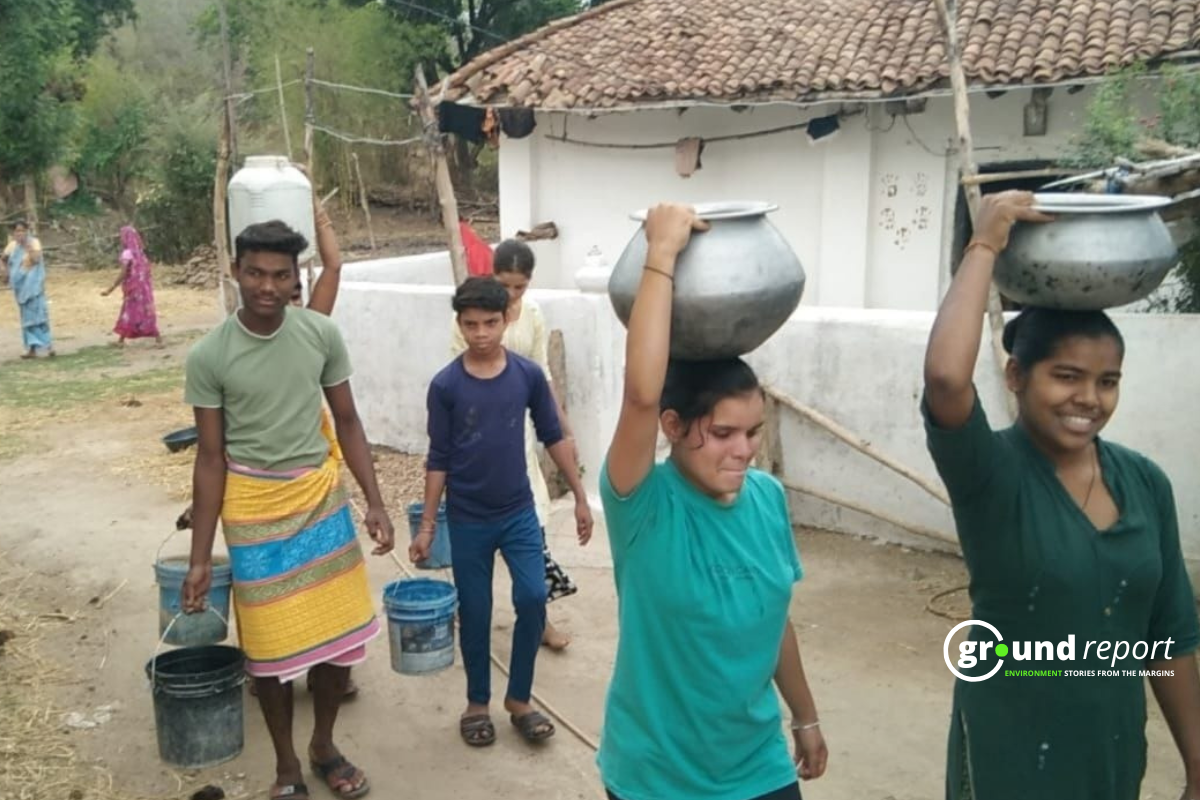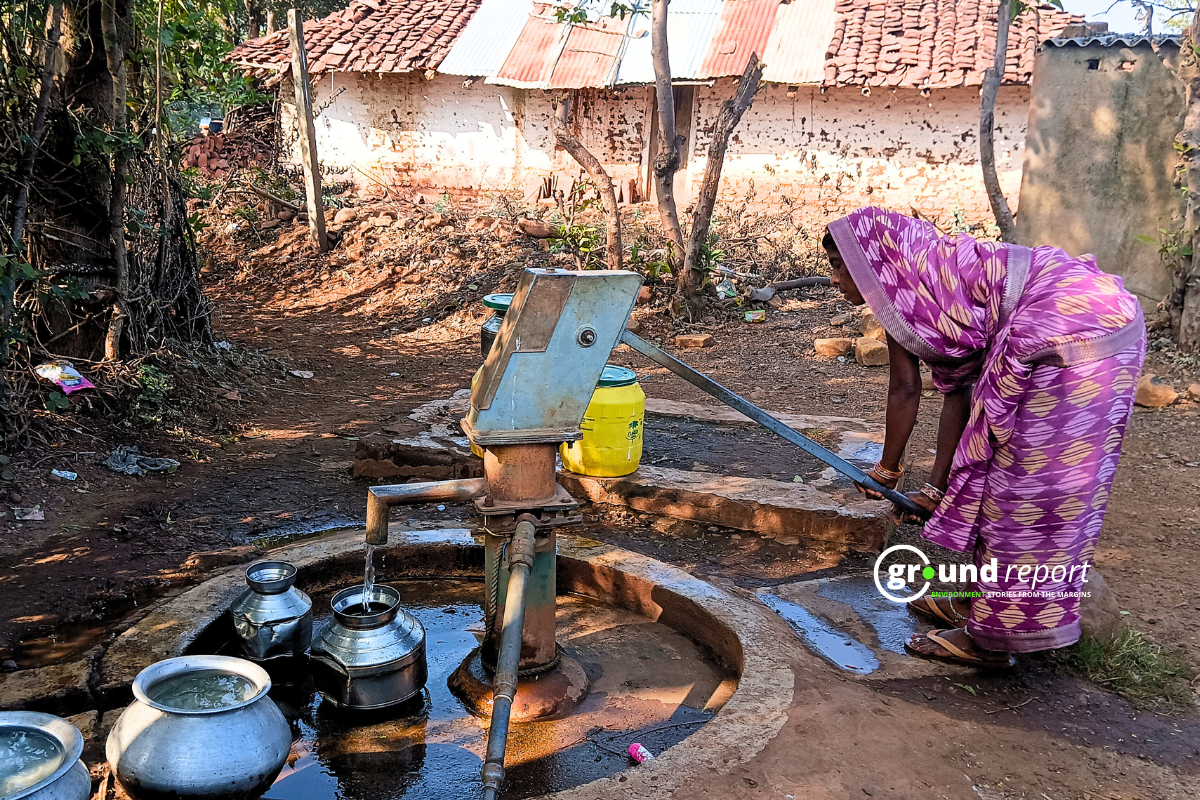Several states across the nation are currently facing the burn of growing water stress. The Indian Meteorological Department (IMD) reported that 540 districts in India are facing water stress and dry conditions. According to the World Bank, 63 per cent of India’s districts are threatened by falling groundwater levels. Poverty rates increased by nine to ten per cent in regions where groundwater tables have fallen below eight meters. This leaves farmers vulnerable and risking 25 per cent of India’s agriculture.
The Central Ground Water Board (CGWB) estimates that groundwater in about a third of India’s blocks (an administrative unit within districts) is overexploited or critical or semi-critical, meaning that the rate at which water is extracted exceeds the limit or is close to the rate at which it is replenished.
To tackle the depleting groundwater resource, the Central Government formulated an ambitious Rs 6000 crore Atal Bhujal Yojana scheme in 2019. The scheme aims to tackle and facilitate the growing crisis of groundwater depletion in India. The scheme is a five-year program, piloted under the Ministry of Jal Shakti, by adopting a decentralised and community-led approach, that involves gram panchayats, and water user associations.
- The scheme aims to bring behavioural change at the community level through awareness programs and capacity building for fostering sustainable groundwater management in the participating States.
-
This five-year program is to demonstrate community-led sustainable groundwater management, involving people at the local level and demanding side interventions to increase that groundwater level.
-
The scheme also focuses on getting farmers to adopt high-efficiency irrigation practices and broach the more complex issue of getting them to switch to less water-intensive crops.
The present status of groundwater is alarming, mainly because of non-uniform groundwater development and its over-exploitation. “It is well evident that our farmers are hard impacted by the acute shortage of groundwater for the past several years. This scheme will surely help those who require constant groundwater supply,” says Uma Kapoor, Regional Director of Central Ground Water Board to Down to Earth.
A total of 8213 water-stressed Gram Panchayats of Haryana, Gujarat, Karnataka, Madhya Pradesh, Maharashtra, Rajasthan and Uttar Pradesh are in the ambit of this programme. It is funded by the World Bank, with a Rs 3000 crore loan, under the Program for Results.
Progress of Atal Bhujal Yojana
As per the World Bank’s implementation status report, the progress and the overall implementation of the Atal Bhujal Yojana have been satisfactory. The programme has accelerated the implementation of Water Security Plans (WSPs), disclosure of groundwater monitoring data, and convergent interventions by the line departments of the states. The programme involves a detailed process of ‘water budgeting’. The World Bank has found that over 2,200 villages have drawn up water budgets showing– how much groundwater is available, how much is estimated to be recharged, and how much can be set aside for agriculture.
In Gujarat, for instance, farmers are beginning to understand the need to move away from water-guzzling crops such as cotton and wheat to pomegranates and cumin, which not only use less water but also fetch good prices. The scheme is leveraging the MNREGA program and the watershed development component of PMKSY to help farmers build water harvesting structures, and get ‘more crop per drop’ by adopting high-efficiency irrigation systems.
The programme also has a dedicated mobile app, web portal and publicly available information on the programme dashboard to increase transparency in information gathering and dissemination to the public.
Subodh Yadav, the Joint Secretary in the Ministry of Jal Shakti, wrote to The Deccan Herald that the scheme aims at smart and water-efficient agricultural practices like drip and sprinkler, crop rotation, soil moisture monitoring etc., and, accordingly, targets to bring the 4.5-lakh area under water-efficient use. More than 50% of the target has been achieved by FY-2022-23.
According to the publicly available information on the programme dashboard, Rajasthan has done a better job in adopting efficient water use practices than Madya Pradesh and Uttar Pradesh. They achieved 21 per cent of the target in improving the rate of declined water and 72 percent of it is water level target. However, the state is well behind in its progress compared to the other 4 states. The field study by the think tank CEEW shows that the trend of declining groundwater levels during pre-monsoon periods was reversed in Rajasthan, including in the Kota and Chittorgarh districts.
It was found that 100% of Rajasthan village water and sanitation committees including Auxiliary Nurse Midwives, and Anganwadi had sufficient knowledge of rain gauges, water quality testing kits and piezometers. However, their capacity to use monitoring instruments was low, beneficiaries are gradually developing in-depth knowledge about the water security plans.
Though the programme is essentially a community-based institution, other village members (especially non-beneficiaries) need to be engaged more effectively to achieve the desired outcome. Some farmers used the existing information on the groundwater level and its quality monitored for wells near their respective fields and shared this knowledge with fellow farmers. More than 50 per cent of line departments think that the additional data can be used for better planning of their respective annual work plans (AWPs).
However, there is little clarity on the criteria followed by the state-line departments in allocating funds to their district offices for various interventions. This causes low uptake of interventions under the ABY, discouraging farmers from availing benefits. Moreover, the absence of dedicated staff to monitor groundwater at the block and below levels, unlike in other line departments, is a challenge for effective monitoring at the lowest level.
Keep Reading
Part 1: Cloudburst in Ganderbal’s Padabal village & unfulfilled promises
India braces for intense 2024 monsoon amid recent deadly weather trends
Support us to keep independent environmental journalism alive in India.
Follow Ground Report on X, Instagram and Facebook for environmental and underreported stories from the margins. Give us feedback on our email id greport2018@gmail.com.
Don’t forget to Subscribe to our weekly newsletter, Join our community on WhatsApp, and Follow our YouTube Channel for video stories.









